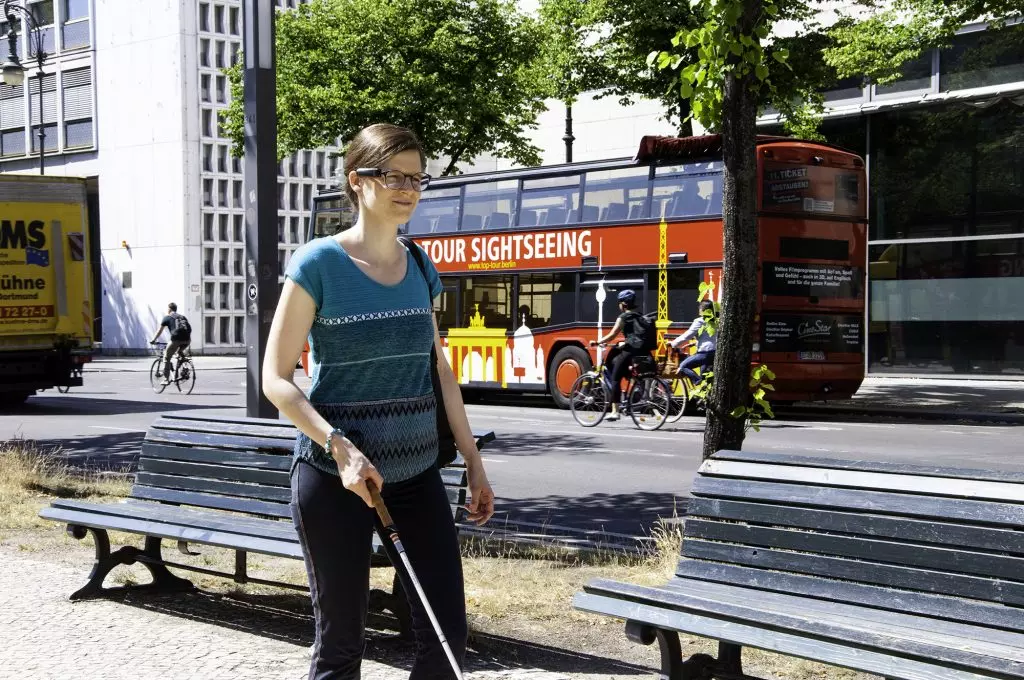Incorporating Assistive Technology Into Your Everyday Life
2020-05-04 | By Orcam Staff

For anyone who has been living with visual impairment for a long time, we at OrCam understand that your routine is pretty much figured out. We get that you may not be inclined to start using any new assistive technology at all, because as they say, “if it ain’t broke, don’t fix it”. It’s possible that you ask family members whether or not your pants and shirt match, and another friend to drive you to work on the rainier days of the year.
In contrast, a newly blind person usually needs the help of a rehabilitation specialist to adjust to living without sight, or with vision impairment. If you aren’t fully blind, you may be able to see your phone bill if you hold it very close to your eyes, and you can differentiate between grandchildren once they start speaking. But what if you could do even more? What if you could see more than just enough to get by?
What is assistive technology?
You hear the term all the time, but what exactly is assistive technology, and why is it worth incorporating into your already set daily routine? Assistive technology is anything used to improve the capabilities of people with disabilities–in this case, visual. These tools, machines, and software help people with disabilities resolve issues related to their disabilities.
“Assistive technology promotes greater independence by enabling people to perform tasks they were formerly unable to accomplish or had great difficulty accomplishing, by providing enhancements to, or changing methods of interacting with, the technology needed to accomplish such tasks.” As an example, wheelchairs provide people who cannot walk with the ability to get around on their own, and a hearing aid provides a person who cannot hear with the ability to hear. For the visually impaired, a device like the OrCam MyEye gives a person whose vision is not strong enough to read text or recognize faces the ability to do that without relying on the help of other people.
Environmental Awareness
Awareness and arrangement of your environment is the first challenge a newly blind person must face when coping without sight, and a continuing challenge for people who have been visually impaired for a long time as well. Open kitchen cabinet doors and chairs that are not pushed underneath the table can all present a hazard for someone who cannot see them.
With time, a visually impaired person will learn how to look out for these challenges, but something that can help them immediately is the new orientation feature on the OrCam MyEye Pro (currently in beta). When a person is wearing their OrCam MyEye Pro device, all they need to do is double-tap the device and say “What’s in front of me?” and are told immediately whether cups, chairs, tables, screens, or doors are in their immediate vicinity.
Everyday Chores & Tasks
For people who are losing their vision, getting used to their surrounding environment is just the beginning in learning to cope without sight. Some other issues that blind or visually impaired people must overcome are cooking meals safely over a hot stove or with a sharp knife, and personal care such as applying makeup or shaving.
Again, this is something that it is possible to get used to but that can be dealt with much more easily with the use of an assistive technology device like the OrCam MyEye Pro. When wearing this device, all the user has to do is point their finger at a recipe in a cookbook or at the tube of face moisturizer and it will immediately scan all the text and read it back to you. This can help you know whether to add one tablespoon or one teaspoon of vanilla extract to your cake batter, or whether you accidentally picked up your eye cream instead of your face moisturizer.

Communication
Oftentimes, people who are visually impaired or slowly losing their vision find themselves faced with the idea of tackling the learning of a new language, Braille. While children pick up languages easily, this can be harder for adults who have read with their eyes for the majority of their lives. Instead of learning Braille and putting labels in Braille on household items such as cleaning products and washing machine settings, this is another great use for the OrCam MyEye Pro. While wearing this device, the user just points a finger and listens as the words are read to them!
The OrCam MyEye Pro can read the fine print in your electricity bill, helping you understand it completely on your own. It can read the side columns in the newspaper so you can know more than just what it says in the headlines. It can read your child’s homework assignment so you can be the knowledgeable parent in the household and help them complete it.

Another cool feature that the OrCam MyEye Pro has is facial recognition. When it comes to communicating with people, oftentimes blind or visually impaired people don’t know who the person who walked into the room is until they open their mouths to speak. However, with the OrCam MyEye Pro facial recognition feature, you can program it to remember your spouse, your grandkids, your coworkers, and any other special people in your lives!
Travel
Getting around requires blind people to use their hearing and sense of touch to give them the cues their sight cannot provide. Until the OrCam MyEye Pro, reading a regular map or a street sign was something that a visually impaired or blind person could only do with the help of another sighted person. However, the OrCam MyEye Pro can read street signs. When wearing the device, all you need to do is face the sign and point with your finger, and it will read the name of the street to you.

Another thing that can be a challenge in everyday life but especially when traveling is handling money. With all paper bills being the same size, it can be hard to know which is the $1 bill, the $5 bill, or the $50 bill. However, the OrCam MyEye Pro can easily read which bill you are holding in your hand when wearing the device, removing that challenge from your travel plans.
If you still need to be convinced why investing in assistive technology like the OrCam MyEye Pro is worthwhile for you, drop in your contact info below and we’ll be in touch with you shortly.
More Stories

Veterans Associations and How They Can Help You - OrCam
2024-06-24 | By OrCam Staff

Top AI Assistive Technologies Enhancing Accessibility | OrCam
Explore how AI-driven assistive technologies are revolutionizing accessibility for individuals with disabilities.
2024-05-29 | By OrCam Staff

AI in Education: Enhancing Accessibility for All Students | OrCam
AI is changing the face of education by enhancing accessibility. Explore practical applications and success stories in educational technology.
2024-05-28 | By OrCam Staff

Revolutionizing Accessibility: How AI & IoT Enhance Assistive Technology
Explore the impact of AI and IoT on assistive tech, transforming accessibility and empowering lives with smart innovations.
2024-05-28 | By OrCam Staff

Transforming Lives: AI & IoT in Assistive Tech | Personal Stories
Read inspiring personal stories about the transformative power of AI and IoT in assistive technology.
2024-05-28 | By OrCam Staff

Unlock Reading Freedom: Tech for the Visually Impaired
Explore the latest in assistive technology designed to empower visually impaired individuals with independence and confidence.
2024-05-23 | By OrCam Staff



